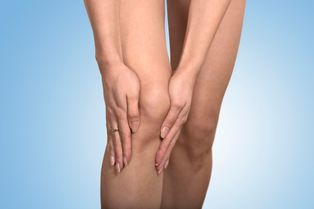
This is an inflammation of the bursa (a small fluid-filled sac) located near the joint of the knee. The function of the bursa is to reduce friction and cushion pressure points between the bone and the tendon, muscle, and skin close to the joints.
Any of the small fluid-filled sac (bursa) found in the knee can become inflamed, but knee bursitis usually occurs above the patella or on the inside of the knee under the joint.
Knee bursitis results in pain and can restrict mobility. Treating knee bursitis often involves a combination of personal care practices and the treatment administered by the physicians to relieve pain and inflammation.
Cause of Knee Bursitis
There are many possible causes of knee bursitis as well as some of the risk factors that some people are likely to develop. Common Causes and Risk Factors are listed below:
1. Past injuries. Damage can be done to the bursa of the kneecap as a result of trauma to the knee; this makes it be filled with blood and the lining to become inflamed. Even if the body re-absorbs blood, the lining of the bursa may remain inflamed; this leads to the symptoms of knee bursitis.
2. Repetitive and prolonged kneeling. Bursitis is often caused by frequent "mini-traumas", which can cause the same problems as a serious injury. People who often kneel - people who build carpets, for example - may develop bursitis on their knees.
3. Infection. Approximately 20% of people with knee bursitis have septic bursitis, which means that the prepatellar bursa is infected. Septic bursitis occurs more frequently in months. Infection can reach the purse through cutting, perforation or even bite from insects. It is possible to have septic bursitis without obvious cuts or abrasions; sometimes the cause of the infection is unknown.
Certain medical conditions and drugs that suppress the immune system of an individual can make them more susceptible to septic bursitis. For example, people with cancer, HIV / AIDS, lupus, alcoholism, chronic obstructive pulmonary disease (COPD) and diabetes are more likely to suffer from septic bursitis.
Symptoms of Knee Bursitis
Signs and symptoms of knee bursitis differ depending on the type of bursa that is affected and also the root cause of the inflammation.
Generally, the affected part of the knee may be hot, tender, and swollen when pressure is applied to it. You also feel the pain when you are moving or even at rest.
When the knee is hit with a heavy blow, it can cause the symptoms to occur quickly. However, most cases of knee bursitis stem from friction and irritation of the bursa that occurs in tasks requiring a lot of kneeling on hard surfaces. Symptoms begin gradually and can worsen over time.
Knee Bursitis Treatment
Treatment for Knee Bursitis requires restoring the circulation and blood flow to the affected structures in your knee. Pain is caused when swelling, inflammation and decreased circulation generate a blockage, which causes blood flow to be interrupted or slowed. Treatment for this issue requires breaking up the accumulated fluids in your knee to allow for improved healing and quicker recovery.
Products recommended for symptoms of swelling, redness, pain, and inflammation, and if coolness makes your pain feel better:
Ice Substitute Poultice
Bruise Relief Liniment
Muscle Therapy Massage Oil
Products recommended when swelling and inflammation are gone, but you still feel pain, stiffness, weakness, and/or sensitivity in cold and damp weather, and if heat makes your pain feel better:
Pain Relief Liniment
Tendon and Ligament Poultice
Muscle Therapy Massage Oil





